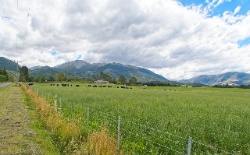Safety practices for toxic gases may be causing risk
PRESS RELEASE
From: ENVCO Global
Date 7 September 2012
Common safety practices for toxic gases may be putting public and employees at risk
Common practises in site safety measurements – when excavating contaminated soil – is to meet only the requirements of a permit or contract and then only for combustion risks, potentially putting employees and the public at risk.
Development Manager for ENVCO Global, Murphy O’Neal, said today that 99% of measurements on contaminated sites – for dangerous gases – are carried out at lower exposure limits (LEL) which reads in percentages of 10,000s parts per million (1.0%) and usually a minimum detection of 1,000 ppm (0.1%).
“At ENVCO Global we maintain that the practise to test for combustion only, ignores the fact that the person ‘down the hole’ is being exposed to toxic gases which do him or her long term health damage, and which may also impair their ability, for example, to operate heavy machinery.
“We have seen drivers of fuel tankers resupplying a service station open the ‘tank level testing covers’ (in addition to the exhaust masts), to speed up the gravity unloading process (reduced pneumatic friction).
“As a result, we measured 600 parts per million of hydrocarbon gases at ground level near a tanker truck – three times the STEL limit the driver should be exposed to. There is also the concern that the driver of the tanker becomes intoxicated as a result,” he said.
(STEL: Short-term exposure limit means the maximum average exposure to the gas measured over any 15-minute period in the working day. Measures over STELs will require removal of personnel from theexposure area.)
O’Neal says the problem is not only with the gasoline industry, it’s everywhere that, for example, contaminated soil is being excavated i.e. work done on landfill sites.
ENVCO Global maintains that the harm can be mitigated by using a flame ionisation detector (FID) which measures 0- 50,000 parts per million for organics like methane and natural gas. Detector options allow certain instruments to work in both ppm and percentage ranges like the Eagle IR or catalytic.
“At sites were hydrocarbons are a risk we recommend a photoionisation monitor (PID), which measures 0 - 15,000 parts per million (1.5% LEL).”
O’Neal said the reality is that testing for LELs does nothing to prevent exposure limits for employees being breached – while both FIDs and PIDs measure levels significant to human exposure.
“At ENVCO Global we contend that a number of tragic accidents that have occurred in the past may have been prevented if we started testing for physiological danger first – the warning signals would have kicked in long before combustion,” he said.
Ends


 Citizens of the Sea: Sailors To Revolutionise Our Understanding Of Pacific Biodiversity
Citizens of the Sea: Sailors To Revolutionise Our Understanding Of Pacific Biodiversity Netsafe: Making A Splash With Online Safety: Netsafe Launches New Flagship Programme For Kids
Netsafe: Making A Splash With Online Safety: Netsafe Launches New Flagship Programme For Kids NZGBC: Flood Resilience PhD Student Widi Auliagisni Named Future Thinker Of The Year 2024
NZGBC: Flood Resilience PhD Student Widi Auliagisni Named Future Thinker Of The Year 2024 Business Canterbury: European Free Trade Agreement A Game-changer For Canterbury
Business Canterbury: European Free Trade Agreement A Game-changer For Canterbury Business Canterbury: Urges Council To Cut Costs, Not Ambition For City
Business Canterbury: Urges Council To Cut Costs, Not Ambition For City Wellington Airport: On Track For Net Zero Emissions By 2028
Wellington Airport: On Track For Net Zero Emissions By 2028



